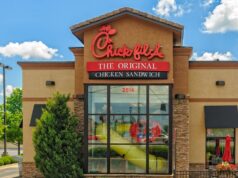In the highly competitive world of the food industry, having a good menu that appeals to customers is essential for successful restaurants.
A well-designed menu not only showcases the culinary offerings but also serves as a powerful marketing tool. It is the gateway to your establishment’s unique flavors and dining experience.
Therefore, creating a menu that captures the hearts and palates of your target audience is essential to stand out from the competition.
In this blog post, we will explore practical strategies for developing a good menu that caters to the desires and preferences of your target audience, ensuring your restaurant’s long-term success.
Understanding your customer’s needs is the cornerstone of building a successful menu. By conducting market research and analyzing data, such as demographics, preferences, and dietary restrictions, you can gain valuable insights into the desires and expectations of your target audience.
This knowledge will enable you to curate a menu that satisfies their cravings and exceeds their expectations.
With the advent of online platforms like Owner.com reviews, customers’ opinions and feedback have become increasingly accessible, providing valuable information about their dining experiences and preferences.
Incorporating such insights into your menu development process can significantly enhance appeal and profitability.
Know Your Target Audience

Understanding the target market is essential for developing a good menu that appeals to customers.
You can gain valuable insights into their demographics, preferences, and dietary restrictions through thorough market research.
This information allows you to tailor your menu to meet their needs and desires. Factors such as age, income level, location, and lifestyle choices significantly shape menu offerings that resonate with your target audience.
By understanding their preferences, you can create a menu that reflects their tastes and provides a more personalized dining experience.
Moreover, it is essential to consider dietary restrictions and preferences when developing your menu. You can check Carnivore Snax to see if a carnivore diet is good for your meat lovers’ target audience and how to incorporate it into your menu.
Incorporating options for vegetarians, vegans, gluten-free, or other nutritional needs showcases your commitment to inclusivity and ensures that all customers can find suitable choices.
This expands your customer base and demonstrates your attention to catering to diverse preferences.
By catering to your target audience, you can enhance customer satisfaction and loyalty, ultimately driving the profitability of your menu.
Offer a Variety of Choices
Offering diverse choices is critical to developing a good menu that appeals to customers. You cater to different tastes, preferences, and dietary needs by providing various options, ensuring something for everyone.
Incorporate a well-rounded selection of appetizers, main courses, desserts, and beverages to accommodate a wide range of preferences. This variety allows customers to explore different flavors and find dishes that suit their tastes.
In addition to the breadth of choices, it’s essential to consider incorporating options for specific dietary requirements.
Including vegetarian, vegan, and gluten-free dishes ensures that customers with different dietary restrictions can find suitable alternatives.
By offering these choices, you expand your potential customer base and commit to inclusivity and catering to diverse needs.
Highlight Signature Dishes

Highlighting signature menu dishes on your menu is a powerful strategy to attract customers and differentiate your restaurant from competitors.
These dishes represent the essence of your culinary offerings and create a unique dining experience that customers will remember.
Prominently featuring your signature dishes with captivating descriptions and appealing visuals, you can entice customers to choose these menu items.
Describe the flavors, ingredients, and preparation techniques in a way that evokes curiosity and excitement.
Sharing the story behind the creation of these dishes can also add a personal touch and create a connection with customers, making the dining experience more memorable.
Pay Attention to Menu Layout and Design
Looking into menu layout and design is crucial for creating a visually appealing and user-friendly dining experience.
How your menu is organized and presented can significantly impact customers’ perceptions of your restaurant and their decision-making process.
A well-designed menu layout should be clear, concise, and easy to navigate. Group similar items together under appropriate headings, such as appetizers, entrees, and desserts, to make it effortless for customers to find what they’re looking for.
Utilize spacing, font styles, and sizes to enhance readability and guide customers’ attention to essential menu items or specials.
Incorporate Pricing Strategies
Effective pricing strategies can significantly impact your menu’s profitability and customer appeal. Careful consideration of pricing helps balance maximizing revenue and ensuring perceived value for customers.
One standard method is to employ psychological pricing techniques. For example, charm pricing, where prices end at .99 or .95, creates the perception of a lower price, even if the difference is minimal.
Highlighting value through menu descriptions can also be effective. Emphasize high-quality ingredients, unique preparations, or special features to justify higher prices. Customers are satisfied with their choices when they perceive value beyond cost.
Keep Menu Seasonality in Mind

Embracing seasonal ingredients and adjusting your menu is a powerful strategy to appeal to customers’ preferences.
By offering dishes with fresh, locally sourced ingredients that align with the current season, you create a sense of freshness and connection to nature.
Incorporating seasonal specials or limited-time offerings can further enhance this appeal, creating a sense of urgency and encouraging customers to return for a unique dining experience.
Seasonal ingredients bring a natural vibrancy and flavor to your dishes, showcasing the best flavors each season offers.
By highlighting these ingredients in your menu descriptions and promoting seasonal specials, you create anticipation and excitement among customers.
This adds variety to your menu and creates a perception of quality and innovation.
Seek Customer Feedback and Adapt
Regularly seeking customer feedback on your menu offerings is essential for improving profitability and fostering customer loyalty.
Use comment cards, surveys, or social media platforms to gather valuable customer insights and suggestions.
By actively listening to their feedback and paying attention to recurring comments, you can make informed decisions to adapt and enhance your menu.
Customer feedback provides invaluable information about what works well and areas needing improvement.
Take note of their preferences, suggestions, and any specific requests they may have. This feedback allows you to identify popular dishes, address any issues, and introduce new menu items that align with customer preferences.
Final Thoughts
Developing a good menu that appeals to customers is an ongoing and dynamic process that demands thoughtful consideration and adaptability.
It’s essential to understand your target audience and their preferences, offer diverse choices, highlight signature dishes, and pay attention to menu layout and design.
By implementing these strategies and consistently gathering customer feedback, you can create a menu that captivates and satisfies your audience while maximizing profitability.









